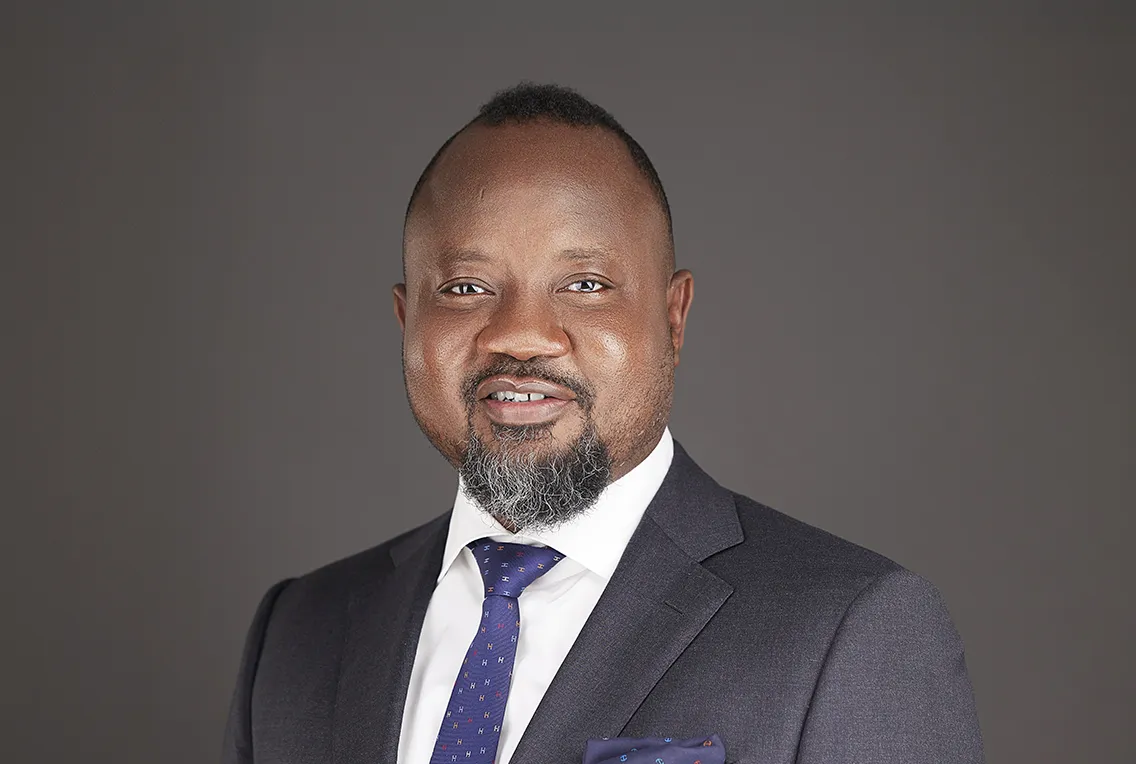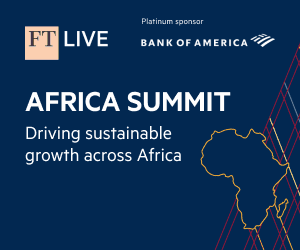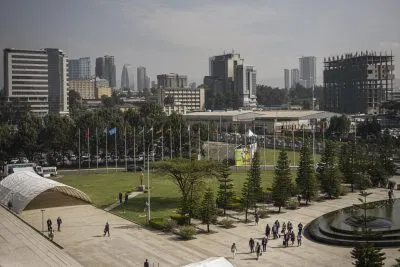Since its establishment in 2007, the Africa Finance Corporation has defied expectations. This relatively new development institution, born out of public-private collaboration to drive investments into infrastructure, today has a balance sheet in excess of $12bn invested in infrastructure projects in 36 countries across the continent.
In an asset class that requires pioneers and innovators as well as intrepid actors, AFC has managed to demonstrate that infrastructure is investible. In the power sector, AFC has invested in a wide array of projects, including the Cenpower Kpone Independent Power Plant (KIPP) in Ghana, the Cabéolica wind farms in Cape Verde, as well as the first-ever wind farm and independent power producer in Djibouti, to name a few.
It has also financed transport and logistics projects such as the Henri Konan Bedié Bridge in Côte d’Ivoire, the
expansion of Ethiopian Airlines, the Bakwena Toll Road in South Africa, and Port d’Abidjan in Côte d’Ivoire.
In telecommunications, the corporation was an early backer of MainOne (that has since sold a stake to Equinix) and SAIF acquisition in South Africa. AFC has also made substantial investments in natural resources, including projects involving Thor Explorations’ Segilola gold mine in Nigeria, Sonangol in Angola and the Kamoa-Kakula copper project in DRC.
The Corporation has posted strong results. Between 2022 and 2023, AFC grew its profits by 15%, climbing from $285.9m to $329.7m, while its operating income surged by 24% to reach $497.5m. The Corporation’s liquidity coverage ratio was an impressive 161%, and total equity saw a substantial increase of 27%, reaching $3.4bn.
That is the legacy that Banji Fehintola, its newly appointed executive director of financial services, inherits and will be hoping to improve on.
Fehintola, who was the treasurer and had been with the Corporation for over a decade, took over on 1 August from Sanjeev Gupta, under whose tenure AFC had seen a fivefold increase in borrowings, from $1.6bn to over $8bn, and a substantial expansion of treasury assets from $1.47bn to $5.29bn. Gupta also played a key role in raising approximately $1bn in new equity capital, diversifying AFC’s shareholder base, and expanding its country membership from 13 to 43 nations.
Given his experience at AFC, and having run a department that was reporting back to Gupta, Fehintola is no stranger to the task at hand. He describes his role as “raising the money that the investment division spends”. While the investment division focuses on deploying capital across AFC’s key focus sectors, the financial services division manages the Corporation’s balance sheet and raises both debt and equity capital from global capital markets.
The division is central in positioning AFC as the key partner for global capital looking to work in Africa. This division includes the core treasury function – the treasury-client solutions business, a relatively new initiative designed to provide a range of financial solutions to clients such as managing interest rate, currency and commodity price risks, and central bank relationships, as well as handling complex financial products like derivatives.
Fehintola also led a team that was responsible for providing liquidity to African financial institutions – offering lines of credit and trade finance, a function that has become more critical “in a situation where capital is reversing out of the continent.”
It has also become a key growth pole for the bank. “It’s a rapidly growing business that supplies close to $100m to the profit and loss line of the bank so it’s not small,” he points out.
Within the division, there is also a financial advisory team that advises clients and helps them raise capital through debt and equity, as well as a syndications team that is very active in originating transactions and attracting global capital to distribute the associated risks worldwide.
Another part of the financial services division is the newly renamed ‘capital mobilisation and partnerships team’ (CMP), which was previously known as country relations. This team manages relationships with member countries of AFC and shareholders and is responsible for equity capital raises. The CMP team plays a vital role in ensuring AFC has the necessary capital to support its future growth ambitions.
“Today,” Fehintola says, “the financial services division accounts for about half of AFC’s revenues. It’s a big part of AFC’s success but more importantly, our corporate growth would not be possible unless the financial services team is actually raising the capital in the form of debt, equity and other instruments that we need to manage the balance sheet of the Corporation.”
The bigger picture
Looking at the bigger picture, the AFC, Fehintola says, has a clear mission. “We are trying to help Africa to industrialise. We are trying to bridge an infrastructure deficit on the continent.”
That gap, according to the African Development Bank, is somewhere in the region of $170bn annually, which, Fehintola says, places the efforts that AFC and its counterpart regional development finance institutions are making into perspective.
“I was at a forum of African multilaterals recently and our combined balance sheets amounted to about $60bn – and that is still too small,” he recalls. Given that reality, he argues, AFC cannot stop at $12bn or even $25bn, the figure it hopes to reach in five years. “We need 20 AFCs; 20 Afreximbanks; 20 TDBs; and we will still only be scratching the surface,” he declares.
Achieving AFC’s own targets requires raising new equity, Fehintola explains. “Our estimate is that we probably need to raise up to $1bn so we will probably be in the market looking for $200m in new equity every year over the next five years.”
This new equity would allow AFC to leverage its balance sheet at a ratio of three to one, enabling it to raise more debt. “So we will be very active in the bond markets and in the syndicated loan markets,” he says. Some of these markets, Fehintola adds, will be non-traditional. “We will be looking to tap new markets across the world. I don’t think depending on just Europe or the United States is sustainable in the long term so we will need to look for new pockets of liquidity across the world, including from Africa, to finance growth.”
This is a path that AFC is already on. In 2019 and 2022, it raised $140m and $160m respectively via Kimchi bonds in Korea. It has also ventured into the Samurai market, issuing two successful syndicated loans.
While the Corporation continues to explore more conventional methods of raising finance – it is very active in the Swiss markets, for example – it is very clear about its intentions to have a more diverse portfolio of funding sources, and Fehintola’s tenure might be characterised by this ambition.
“The sukuk market, for example, is one that has a deep pool of liquidity that we must find a way to crack,” he says, noting that AFC has already done a deal in this form of Islamic financing where, rather than earning interest, the investor owns a share of an asset linked to the investment and returns are derived from the asset’s revenue.
Asia, Fehintola notes, will also be an important recourse for AFC in the coming years. “We are looking at the panda bond market (China), which is something that we haven’t done in the past but which we are looking at and we are also looking at Taiwan,” he says.
AFC, he reminds us, is not akin to a deposit-taking commercial bank, so diversifying its sources of funding is of great strategic importance. “It is super-critical for us so you will be seeing a lot of that over the next couple of years,” he predicts.
Africa as a funding source
Africa itself may yet become a crucial source of funding for its DFIs. Calls for African capital to be deployed for African causes have risen in recent times – for example, Ghana’s President Akufo-Addo called for African countries to invest at least 30% of their foreign reserves in African multilaterals.
Fehintola places the situation in stark perspective. “I’ve never understood why African reserves end up being shipped to New York and other developed markets, only for bank treasurers like myself to go back to the same places to ask the asset managers to buy our bonds to enable us to solve Africa’s problems.”
There is some vigorous outreach to central bank governors on this but Fehintola concedes that African DFIs have to earn the trust of the stewards of the continent’s reserves. “For the person managing the reserves, liquidity and safety are important so the question is how we tick those boxes to ensure that the money can be made available to finance infrastructure and address the other challenges that we have on the continent.”
Another important source of African capital is pension funds, which are estimated to hold about $1.2trn in untapped assets. Along with other African DFIs, AFC wants more of these funds to be deployed towards solving Africa’s problems, away from treasury bills and to causes that improve the lives of African citizens.
Crucially, he says, this will not mean loss of earning for those funds, proffering AFC’s own performance as evidence. “We are a very profitable bank. I mean, we pay dividends and our shares are good so I think we tick the boxes for them in terms of diversification and returns – so hopefully we will see quite a bit of that happening,” he says, expressing the hope that through the bank’s capital mobilisation and partnerships division, it can encourage more African pension funds to invest in it.
These efforts are being made against the backdrop of a challenging moment for African economies, many of which are still suffering from the aftershocks of the pandemic, sky-high inflation and the conflict in Ukraine.
While these are challenging factors, the hikes in interest rates exacerbated the situation especially for the countries most in debt – with some, like Ghana and Zambia, defaulting on their debts, several others in distress and still more having their credit ratings downgraded.
While encouraged by the reforms, however painful, that are underway in these countries, Fehintola says it also illustrates the need for DFIs such as AFC, because they are able to facilitate public-private partnerships and to catalyse funding into countries that show the capacity for and results of reforms.
It is important, however, not to paint the African situation with too broad a brush. “We have seen successful issuances from Benin, Côte d’Ivoire and others only this year,” he points out. What this means is that investors are being careful in the choices they make and rewarding countries that they see as promising with their custom.
The same goes for the regional MDBs, Fehintola notes. “Our bond yields are doing well, which means investors are buying those papers in the secondary market so I think broadly speaking the appetite is there, but investors are being selective.”
Fehintola is optimistic about the medium to long-term prospects for African countries’ participation in the capital markets but insists that reforms are essential. Across-the-board-reforms that take account of the impact of monetary, fiscal, tax and exchange rate policies are critical to restoring investor confidence where it has been lost.
“When investors believe those reforms are going to pay off, I think they will invest,” he says, adding, for good measure, that “the world doesn’t owe us anything and we need to sell our story”.
Integrated African capital market?
Despite this, AFC is keen to lead on addressing the often cited challenge of a risk premium that African countries pay on the international money markets. Depending on who you ask, that accounts for between 100 and 150 basis points on the interest rates that African countries pay, owing to a perceived heightened risk that attends loans to the continent.
This continues to persist in spite of evidence that African countries are less likely to default on infrastructure loans than other regions. A Moody’s analysis of global infrastructure default rates, for example, reveals that Africa’s rate is 5.5%, which is lower than Asia’s 8.5% and significantly lower than Latin America’s 13%. The result of this is a vicious cycle, where higher rates force countries into default, which leads to restructuring, downgrades and greater challenges in accessing capital.
The other thing that Fehintola says AFC is keen to lead on is the integration of African capital markets, which will enable lending at scale to African entrepreneurs and for African projects. “If you are Dangote and you want to raise a billion dollars, you should be able to raise that on this continent easily,” he says.
Innovation, it appears, will be the thread that ties these ambitions together. “One of the first things I am doing as executive director is setting up an innovations team within the financial services division,” he reveals.
Innovation, Fehintola says, is central to financial services, a sector that has coincidentally been the source of some of the biggest innovations. “A lot of innovation is coming from financial services and with artificial intelligence and other things that are coming out, we need to stay ahead of the curve to be able to succeed,” he insists.
Fehintola says AFC has already shown innovation in product deployment. “Over the last couple of years, we’ve leveraged our A3 investment-grade rating to help African issuers access global capital markets, even when those markets were tight.
“We did that with the Bank of Industry in Nigeria in 2022 where, with the support of our credit rating, they were able to raise a billion euros. As we speak, they’re back in the market for a new facility, this time for roughly €1.5bn, so you can see that we’ve been able to scale them up in just two years by providing the necessary guarantees.”
Another point of success is the Samurai bond that it supported Egypt with. At a time when Egypt’s bond yields were hovering around 17-18% and the country had no access to the capital markets, AFC secured a guarantee from SMBC for a samurai bond and provided a re-guarantee for SMBC, enabling the government of Egypt to raise about $500m (¥75bn), at a time when no other financing was available to them.
“I think this type of creativity is needed. Even the World Bank is now saying MDBs must scale up guarantees and that is actually something that we have done. So yes, you will see more innovation to unlock capital at scale for the continent,” Fehintola says, providing a context within which AFC’s success over the next few years may be measured.
Want to continue reading? Subscribe today.
You've read all your free articles for this month! Subscribe now to enjoy full access to our content.
Digital Monthly
£8.00 / month
Receive full unlimited access to our articles, opinions, podcasts and more.
Digital Yearly
£70.00 / year
Our best value offer - save £26 and gain access to all of our digital content for an entire year!

 Sign in with Google
Sign in with Google 






